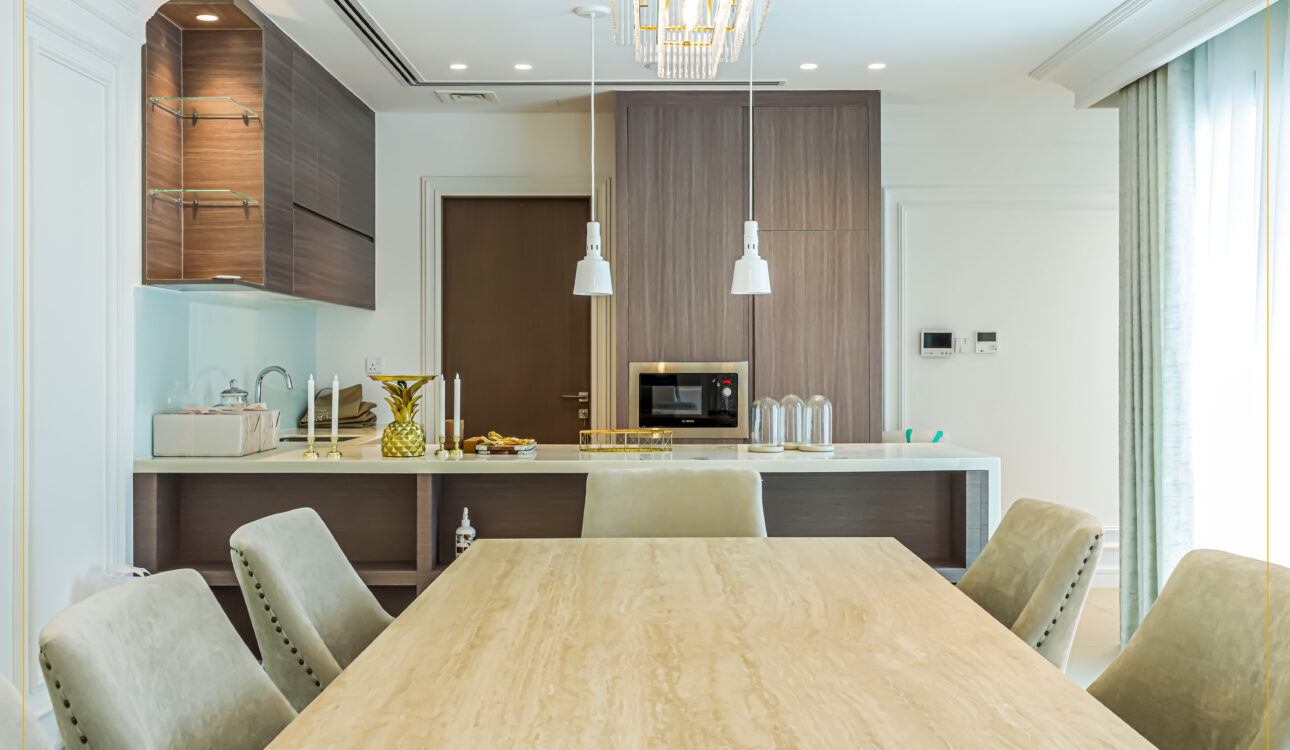Introduction
In today’s world, where environmental consciousness is becoming increasingly important, individuals are seeking ways to make their homes more eco-friendly. The kitchen, often considered the heart of the home, is a prime area for implementing sustainable design solutions. From energy-efficient appliances to eco-conscious materials, there are numerous ways to create a kitchen that is both stylish and environmentally friendly.
Understanding Eco-Friendly Design
Eco-Friendly Design solutions for the heart of home: Reducing the environmental impact of a space by incorporating sustainable materials and practices.
In recent years, there has been a growing emphasis on eco-friendly design solutions for residential spaces. This trend is particularly evident in kitchen design, where homeowners are looking for ways to minimize their carbon footprint while still enjoying a functional and aesthetically pleasing space.
The Importance of Sustainability in Kitchen Design
Sustainability is not just a buzzword; it’s a crucial aspect of modern living. By incorporating eco-friendly design solutions into the heart of the home, homeowners can reduce their environmental impact and contribute to a healthier planet for future generations.
Green Materials for Kitchen Cabinets
Green Materials: Sustainable alternatives to traditional building materials, such as reclaimed wood or bamboo.
When it comes to kitchen cabinets, opting for green materials is an excellent way to reduce environmental impact. Reclaimed wood, bamboo, and recycled materials are all popular choices for eco-conscious homeowners. These materials not only look beautiful but also help minimize deforestation and waste.
Benefits of Green Cabinets
- Reduced Environmental Impact: By using sustainable materials, homeowners can help conserve natural resources and reduce pollution.
- Longevity: Green cabinets are often built to last, reducing the need for frequent replacements and minimizing waste.
- Unique Aesthetics: Many green materials, such as reclaimed wood, offer unique textures and finishes that add character to the kitchen.
Energy-Efficient Appliances
Energy-Efficient Appliances: Devices designed to consume less energy than standard appliances while performing the same tasks.
Investing in energy-efficient appliances is another essential aspect of eco-friendly kitchen design. From refrigerators to dishwashers, there are numerous options available that prioritize energy conservation without sacrificing performance.
Advantages of Energy-Efficient Appliances
- Lower Utility Bills: Energy-efficient appliances consume less electricity, resulting in lower monthly energy bills for homeowners.
- Reduced Carbon Emissions: By using less energy, these appliances help reduce greenhouse gas emissions and combat climate change.
- Government Incentives: Many governments offer incentives or rebates for purchasing energy-efficient appliances, making them a cost-effective choice for homeowners.
Water-Saving Fixtures and Faucets
Water-Saving Fixtures: Plumbing fixtures designed to minimize water consumption without sacrificing performance.
In addition to energy conservation, water conservation is also a crucial consideration in eco-friendly kitchen design. Water-saving fixtures and faucets are designed to reduce water waste without compromising on functionality.
Benefits of Water-Saving Fixtures
- Conservation of Natural Resources: By using less water, homeowners can help conserve precious freshwater resources and protect the environment.
- Lower Water Bills: Water-saving fixtures can lead to significant savings on water bills over time, making them a smart investment for homeowners.
- Durable and Reliable: Many water-saving fixtures are built to withstand heavy use and are backed by warranties for added peace of mind.
Eco-Friendly Flooring Options
Eco-Friendly Flooring: Sustainable flooring materials that minimize environmental impact and promote indoor air quality.
When it comes to flooring options for the kitchen, there are several eco-friendly choices available, including bamboo, cork, and recycled tile. These materials are not only sustainable but also durable and easy to maintain, making them ideal for high-traffic areas like the kitchen.
Advantages of Eco-Friendly Flooring
- Renewable Resources: Bamboo and cork are rapidly renewable materials that can be harvested without causing long-term damage to the environment.
- Improved Indoor Air Quality: Eco-friendly flooring materials are often low in volatile organic compounds (VOCs), which can contribute to better indoor air quality and a healthier living environment.
- Stylish and Versatile: From sleek bamboo planks to colorful recycled tiles, eco-friendly flooring options offer a wide range of styles to suit any kitchen design aesthetic.
Maximizing Natural Light
Natural Light: Sunlight that enters a space through windows, skylights, or other openings.
Harnessing natural light is a simple yet effective way to reduce energy consumption and create a bright, inviting kitchen space. By strategically placing windows and skylights, homeowners can maximize natural light and minimize the need for artificial lighting during the day.
Benefits of Natural Light
- Energy Savings: By relying on natural light, homeowners can reduce their dependence on artificial lighting and lower their electricity bills.
- Enhanced Mood and Productivity: Natural light has been shown to improve mood, increase productivity, and promote overall well-being.
- Visual Appeal: Sunlight streaming into the kitchen can create a warm and welcoming atmosphere, making the space feel larger and more inviting.
Sustainable Waste Management Practices
Sustainable Waste Management: Minimizing waste generation and maximizing recycling and composting efforts.
Proper waste management is a crucial aspect of eco-friendly kitchen design. From composting food scraps to recycling packaging materials, there are numerous ways homeowners can reduce waste and minimize their environmental footprint.
Tips for Sustainable Waste Management
- Composting: Setting up a compost bin in the kitchen allows homeowners to divert food scraps from the landfill and create nutrient-rich compost for gardening.
- Recycling: Recycling glass, plastic, paper, and metal containers helps conserve natural resources and reduce pollution.
- Reducing Packaging Waste: Choosing products with minimal packaging or opting for bulk items can help reduce packaging waste and promote sustainability.
Conclusion
Creating an eco-friendly kitchen doesn’t have to be complicated. By incorporating Eco-Friendly Design Solutions for the Heart of the Home such as green materials, energy-efficient appliances, and water-saving fixtures, homeowners can reduce their environmental impact and create a healthier, more sustainable living space for themselves and their families.
Frequently Asked Questions (FAQs)
Q: Are eco-friendly kitchen renovations expensive?
A: Eco-friendly renovations can be cost-effective in the long run, as they often lead to lower energy and water bills over time. Additionally, many governments offer incentives or rebates for eco-friendly upgrades.
Q: Can I install energy-efficient appliances myself?
A: While some appliances can be installed by homeowners, it’s recommended to hire a professional for complex installations to ensure safety and proper functionality.
Q: What are some budget-friendly eco-friendly flooring options?
A: Bamboo and cork flooring are affordable and eco-friendly options for homeowners on a budget. These materials offer durability, sustainability, and style at a reasonable price point.
Q: How can I maximize natural light in my kitchen?
A: To maximize natural light, consider installing large windows, skylights, or glass doors in the kitchen. Additionally, keeping window treatments light and airy can






